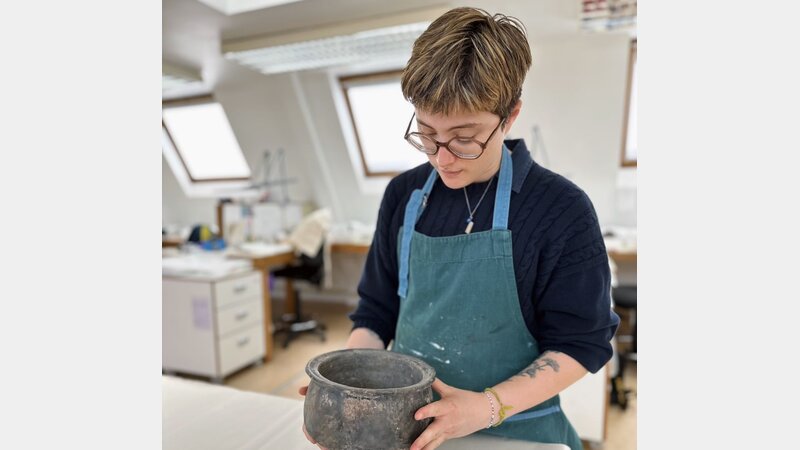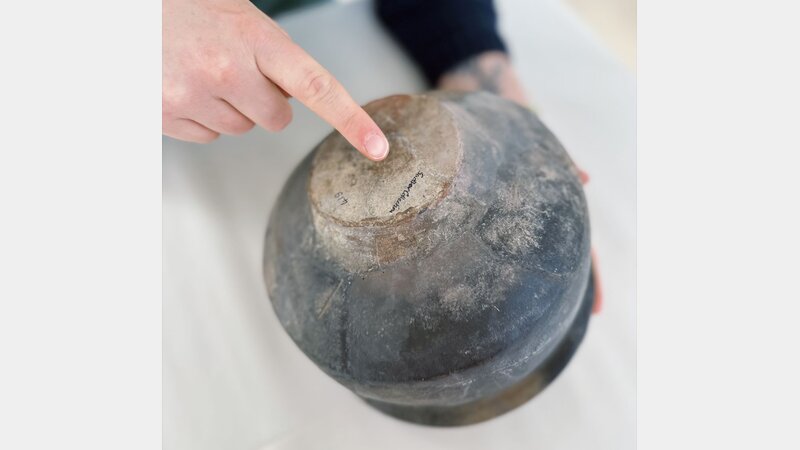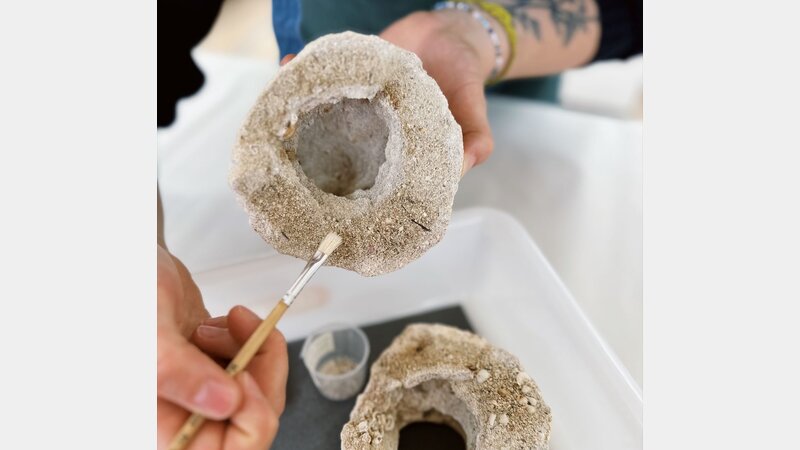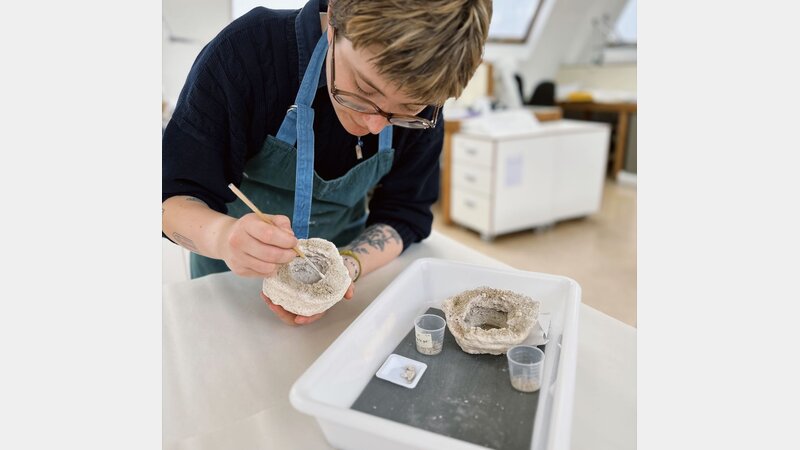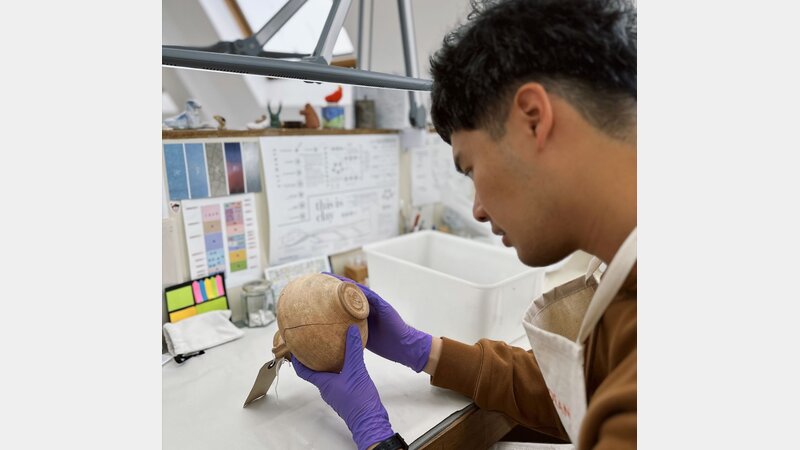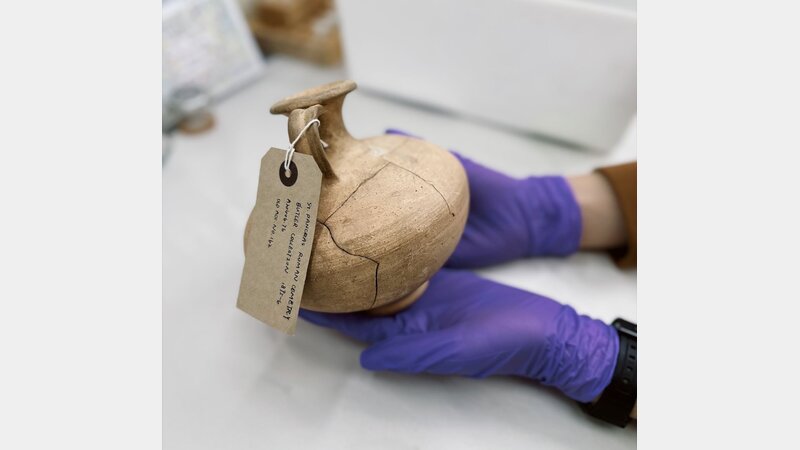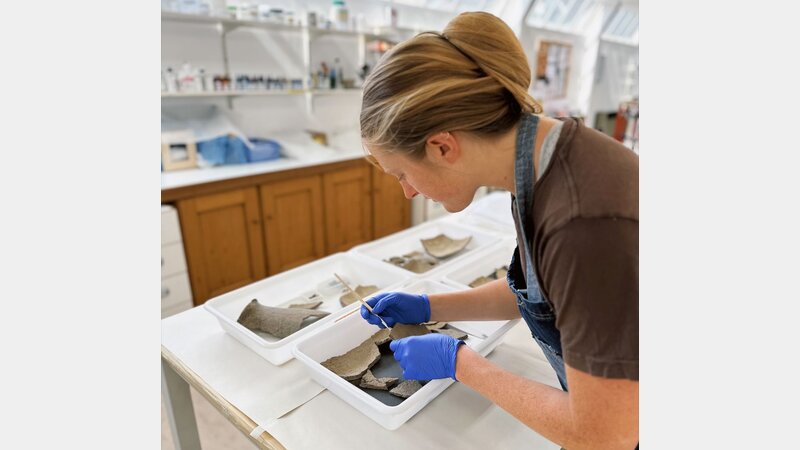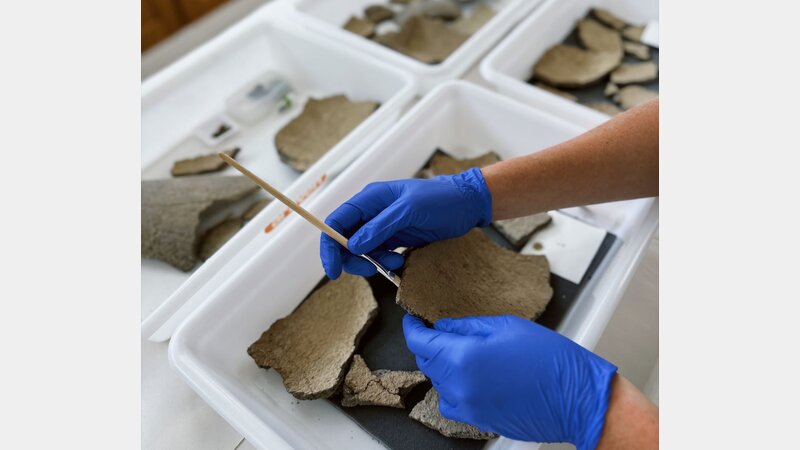Exploring archaeology through Ceramics Conservation
When most people think of ceramics, they picture delicate china teacups or decorative pottery. But what many don’t realise is that ceramics play a significant role in archaeology, opening windows into the past and revealing stories of ancient civilizations.
One of the core principles in ceramic conservation is understanding the balance between preserving the object’s original material and ensuring its stability. As students demonstrate in their work, even the smallest broken shard holds significant historical value.
Take, for example, a project by student Lucie, who worked with a piece from the Novium Museum in Chichester. This object, a fragment of a Roman ceramic, was discovered during an excavation in the city and offers key insights into Chichester’s Roman past. Lucie explains:
“The object I’m working on is a piece from the Novium Museum in Chichester. Discovered during excavations within the city, it holds key information about Chichester’s Roman past. Previously repaired, the adhesive used had since aged and rendered the pot unstable in some places. With care, the pieces were re-bonded and areas of loss were filled with a mixture of glass bubbles and Paraloid B72. By working in tandem with the previous repairs, the object was able to be returned to a state that honoured its history, both ancient and more recent (even repair is part of an object’s story!)”
“The treatment was designed to be reversible, so if future advancements in conservation methods arise, the object can be treated without causing damage to its original form.” This approach of reversibility ensures that ceramics, and other artifacts, can be preserved in ways that allow future archaeologists and conservators to reexamine them.
Similarly, student Wei-Yuan Yang worked with an ancient Roman earthenware jug from the Novium Museum. The jug, which had been broken into three pieces, had undergone previous repairs, but the adhesive had failed over time, leaving visible gaps. Wei-Yuan’s conservation strategy was rooted in the concept of minimum intervention preserving the object with as little interference as possible while ensuring its long-term stability:
“Minimum intervention and reversibility will be the foundation for formulating the conservation strategies of this museum object. All the surfaces will be cleaned with dry soft brush to remove any loose surface contamination. Paraloid B-72 glass bubble mixture will then be applied to the gap for the much-needed structural supports, and 2% Paraloid B-72 will also be applied to all the running cracks to prevent the crack from spreading further.”
Students on our ceramics conservation course are learning that it's about more than fixing broken objects, it’s about telling the full story of the artifact. Their work reminds us that every crack, every repair, and every choice in conservation is part of the object's ongoing narrative and contributes to our understanding of history.
Ceramics may be known for their aesthetic beauty, but they are also vital tools in preserving the past. Whether it’s a Roman jug or a delicate teacup, each object is part of a larger story.
